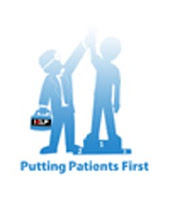EYE DONATION AND SIGHT
RESTORATION
You make a living by what you get. You make
a life by what you give.
-Buddha
This is
the message that Dr. Percy Ghaswala walks in with as he starts his talk on
eye donation. Eye donation is a miracle of life, he says. And indeed it is,
as we see slide after slide of patients who have gained the gift of sight. It
is a joy and a wonder to know what a simple donation can do. It can restore
sight. It can restore hope and can also bring magic that is overlooked by
each one of us in our daily lives. It is the magic of sight.
Imagine
not being able to see colors anywhere. Imagine not being able to see your
children’s faces. Imagine not being able to see the fine details – the loop
of the thread, the eye of the needle, the stitch of both. These aren’t mere
hypothesis, but real live stories of people who suffer from corneal blindness.
All of this can be reversed. A call is all that is needed.
The best
part about eye donation is that it is free of cost. The donor doesn’t have to
undergo any lengthy procedures or any sort of trouble. Dr. Ghaswala and his
team have made this process such a simple one that filling of a card is all
that is needed.
Dr.
Ghaswala also busts certain myths regarding eye donation such as:
Ø The
whole eye is transplanted
Ø The donor face will be disfigured after
removal of eyes
Ø People wearing glasses or those who have
cataract cannot donate
Ø Cornea transplant is an experimental surgery
Ø
Eyes should be removed JUST before death
There are also
certain facts about eye donation that are explained such as:
Ø Only
the “Cornea” is used for transplant
Ø “Anyone” can be a eye donor
Ø There is no disfigurement of the donor’s
face
Ø Cataracts and glasses are due to conditions
related to the lens and not the cornea
Ø Eyes can be donated only AFTER death
Dr. Ghaswala takes
us through the entire procedure of eye donation and eye transplant as well as
he takes us through the process of:
Enucleation
procedure
Eye ball relay in
igloos
Tissue (cornea)
processing
Cornea preservation
and evaluation
Keratoanalysis
Serology (blood
testing)
Keratoplasty (cornea
grafting)
Keratoplasty (surgery)
Finally, Dr. Ghaswala
leaves with the message that conveys it all, “YOU CAN MAKE A DIFFERENCE!”
|




No comments:
Post a Comment